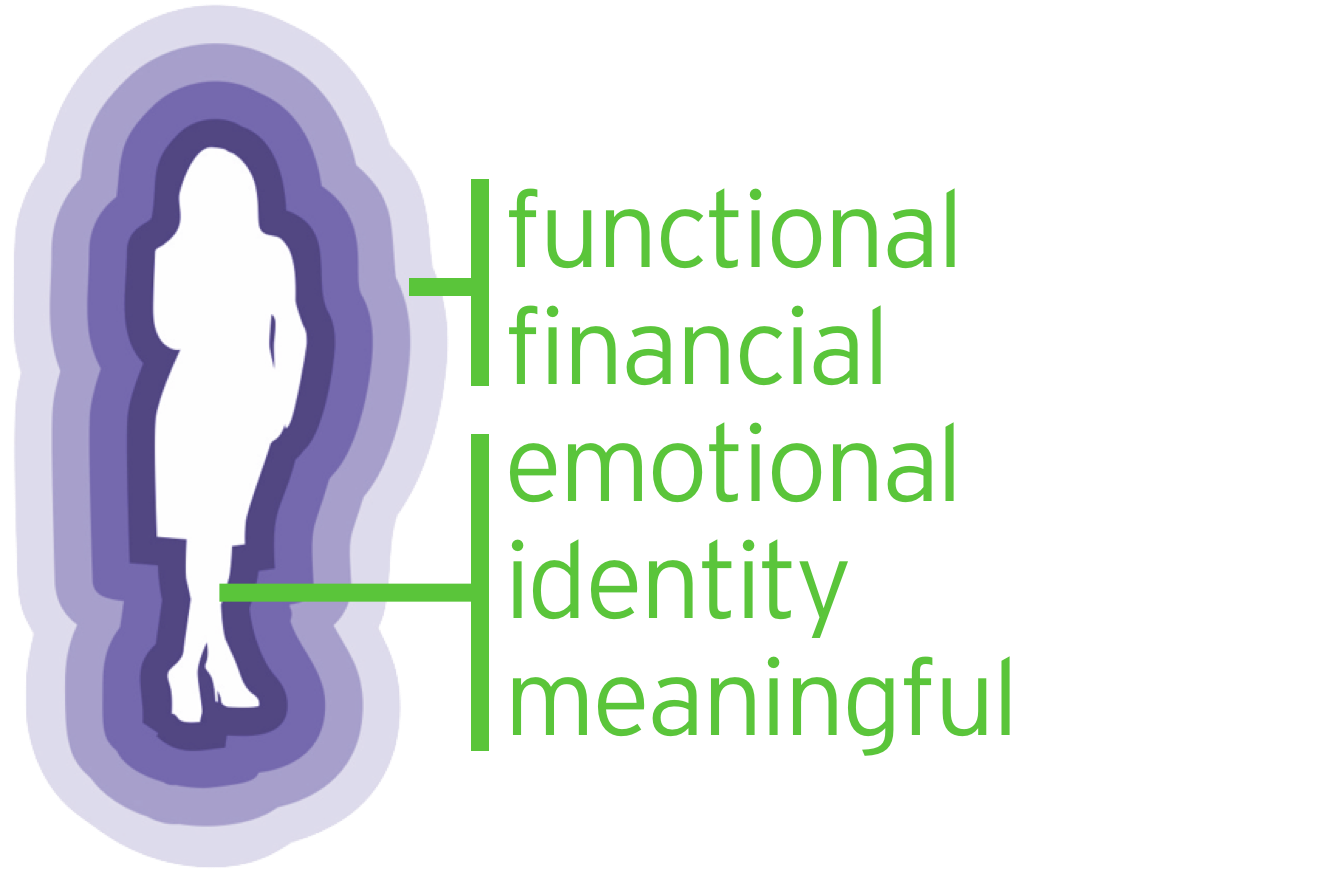…
5 Kinds of Value
…

Contrary to most of how traditional business understands value, there are more kinds than merely financial value. The myopia of only recognizing financial value leads many companies astray when they try to create value for themselves and others (their customers, partners, etc.) or when trying to mitigate all kinds of risks (legal, political technological, market, and especially social).
Recognizing that there are more kinds of value than just money is the first step in building more and better value. (It’s difficult enough to build what you cannot see, let alone what you don’t recognize as existing.)
The first two kinds of value are much easier for people to recognize, understand, and measure. That’s why business is so focused on it. But, that doesn’t mean they’re the most important. In fact, they routinely represent less economic value than the other three.
Functional Value is what products and services do for people in a, yes, functional sense: features and performance. This is where most product development processes focus.
Financial Value, of course, is measured in money. It’s the easiest to understand because it’s the easiest to measure.
Emotional Value is where things get more ambiguous. Most people know there’s more to value than merely features and performance but because the other three kinds of value are largely invisible and can’t be easily counted, they’re skeptical to what these are and how to work with them.
This is distinct from Identity Value. The things we associate with ourselves, surround ourselves with, buy, and use help define us. That may or may not be a healthy thing but it’s a human thing. When these aren’t consistent with our sense of identity (whether our sense of ourselves is accurate or not), we aren’t comfortable—we feel “off.”
Lastly, there is Meaningful Value. Similar to identity value, we are more comfortable and feel more “whole” when certain criteria are met in our lives—when the things that mean the most to us are engaged.
These last three kinds of value are qualitative, making them more difficult to measure than the first two (which can usually easily be measured with numbers). Because traditional business people don’t understand what they can’t measure and qualitative values are difficult to measure in numbers, these last three are lumped together (when they’re acknowledged at all) and called “emotional” or “brand.” However, they’re distinct. And, building them requires different approaches.—and new tools
Read the Article:
Financial Value isn’t the Most Important Value in Business
Books about this:
Blind Spot by Diller and Shedroff
Making Meaning by Diller, Shedroff, and Rhea
The Meaning of Things by Csikszentmihalyi
Other Resources:
Slides: Creative Leadership: The Value Design Brings to Business
